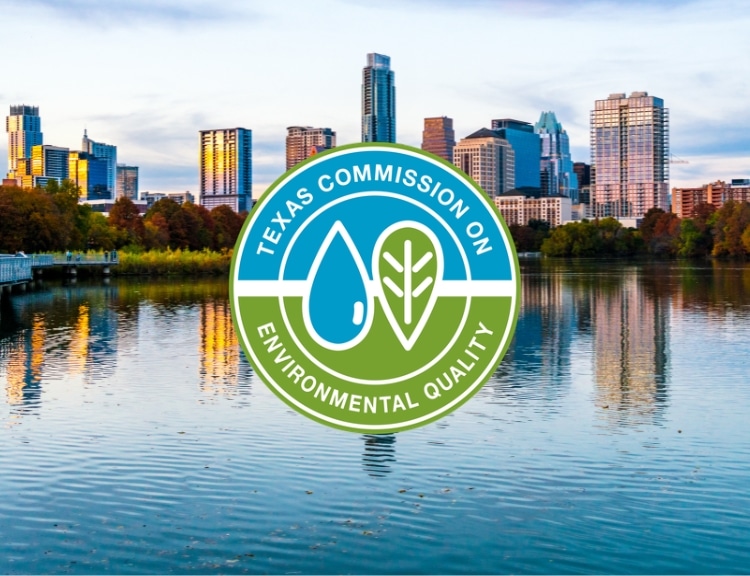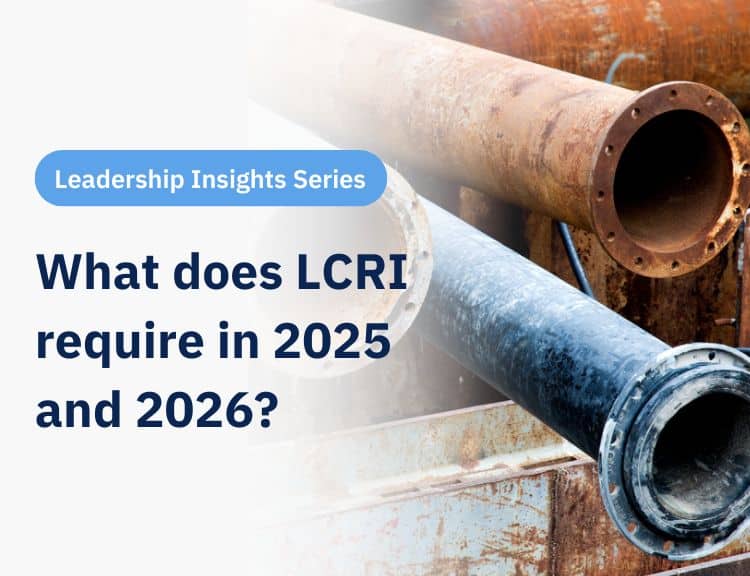The Texas Commission on Environmental Quality (TCEQ) has officially issued approval for the use of predictive modeling and statistical analysis for the development of lead service line (LSL) inventories. This marks a major step forward for Texas public water systems (PWSs) as they work toward compliance with the EPA’s Lead and Copper Rule Revisions (LCRR) and Lead and Copper Rule Improvements (LCRI).
In a recent update to its LCRR FAQ page, TCEQ clarified its position on emerging technologies:
“For the Baseline Inventory under LCRI, TCEQ is accepting the use of alternative and emerging investigative methods, including predictive modeling and statistical analysis. TCEQ acceptance of the use of these methods does not equate endorsement of the method. Note: Water systems are fully responsible for ensuring the efficacy, accuracy, and reliability of the results or their investigation, regardless of the methods used. Water systems should select the method(s) that are best suited to their particular distribution system and community, considering cost, labor skill requirements, disruption to homeowners, overall time, and accuracy.” — TCEQ FAQ on LCRR
This policy shift opens the door for water systems to leverage data-driven tools like machine learning and predictive analytics to identify unknown or likely lead service lines—particularly important in a state as large and diverse as Texas, where traditional field methods can be logistically and financially burdensome.
Key Clarifications from TCEQ
To better understand the scope and expectations around the use of statistical methods, BlueConduit met with a Compliance Officer from the TCEQ Lead and Copper Monitoring Team (LCMT). Here are the highlights from that discussion:
1. Can these methods be implemented before the 2027 Baseline Inventory?
Yes. TCEQ confirmed that updates to the initial inventory can be submitted right away via the State’s SWIFT portal. These updates may incorporate material classification using alternative investigative methods such as predictive modeling and statistical analysis.
2. Will TCEQ issue more guidance around field verification or decision thresholds?
Not at this time. TCEQ is relying on the EPA’s Guidance for Developing and Maintaining a Service Line Inventory. While the door is open for future state-specific guidance, no additional criteria or thresholds will be issued for now.
3. Is pre-approval or a project plan required to use predictive modeling and/or statistical analysis?
No. TCEQ does not require water systems to submit a project plan or pre-approval to implement this approach. Water systems are simply expected to keep their records updated accordingly.
4. Are there post-project reporting requirements specific to predictive modeling?
TCEQ does not require a metrics or summary report to accompany inventory updates using these methods, although water systems are encouraged to retain this detailed information for future reference. While annual inventory submission requirements are still being evaluated, existing LCRR and LCRI notification requirements remain enforced.
What does this mean for Texas Water Systems?
How Predictive Modeling and Statistical Analysis Transform Lead Service Line Programs
The use of predictive modeling and statistical analysis in lead service line inventories isn’t just a matter of regulatory compliance—it’s a strategic advantage for utility planning, public health protection, and cost control.
1. Strategy for reducing unknown service line materials
Unknowns increase compliance requirements and make it difficult to fund and plan replacement projects. Water systems with significant unknowns on either the public or private side can implement these methods to:
- Utilize modeling and analysis results to efficiently reclassify unknown materials as “lead/grr” or “non-lead” accordingly
- Subsequently reduce the burden for annual public notifications and replacement requirements.
2. Prioritizing High-Risk Homes for Replacement
Predictive modeling uses representative field investigation, historical records, neighborhood characteristics, housing age, and other relevant factors to estimate the likelihood that any given service line (public or private side) contains lead. This allows utilities to:
- Identify the homes most at risk of lead exposure without inspecting every address
- Prioritize replacements where they’ll have the greatest impact on public health
- Reduce community disruption by targeting only the most necessary excavations
- Accelerate progress toward LSL replacement goals, even with limited field crews or resources
This is particularly important for complying with LCRI’s emphasis on proactive lead line replacement and minimizing health risks from drinking water.
3. Demonstrating Absence of Lead with High Confidence
Statistical analysis also empowers systems to show, with high confidence, where lead pipes are not present. For water systems with sparse or aging records, this can be game-changing:
- Efficiently reclassify unknown service lines as “Non-Lead” based on robust data analysis and minimal (but representative) field investigation
- Minimize costly and unnecessary digs
- Free up budget and staff time for more targeted investigative work
When backed by sound methodology and field validation, this approach allows systems to meet regulatory requirements while minimizing labor and cost.
Together, predictive modeling and statistical analysis help utilities move from reactive, guess-based inventories to data-informed strategies that protect communities faster, smarter, and more affordably.
A Strategic Opportunity for Water Systems
TCEQ’s acceptance of emerging technologies gives Texas water systems the flexibility to apply the most effective, cost-efficient, and community-sensitive tools to inventory development. It also signals growing trust in data science as a legitimate support for regulatory compliance and public health protection.
However, the agency also made it clear: acceptance is not endorsement. The burden of proving the accuracy and reliability of any approach—whether it’s digging holes or running algorithms—rests entirely with the utility.
For utilities considering predictive modeling, this means taking a rigorous, transparent approach that includes:
- Documentation of data sources and modeling methods
- Validation through representative field investigation
- Ongoing evaluation of model performance, calibration and metrics
- Continuous refinement based on new information
Texas is now among a growing number of states recognizing the value of predictive tools in solving the complex challenge of lead service line identification. The future of compliance—and public health—is smarter, faster, and increasingly powered by data.
*It is important to note that regulatory policies are subject to change at any time.
Interested in how predictive modeling can support your service line inventory?
Contact BlueConduit to learn how we’ve helped utilities across the country accurately identify and prioritize lead service lines—saving time, resources, and disruption to communities.





